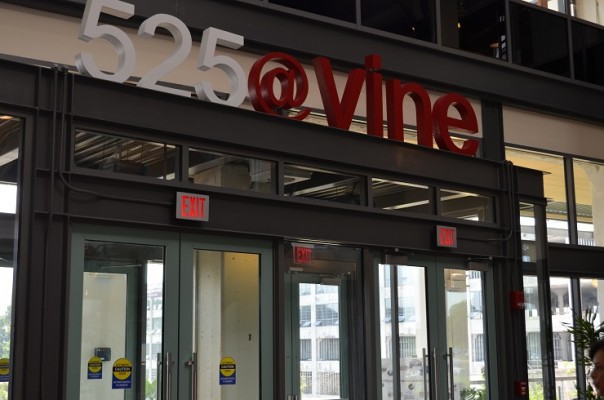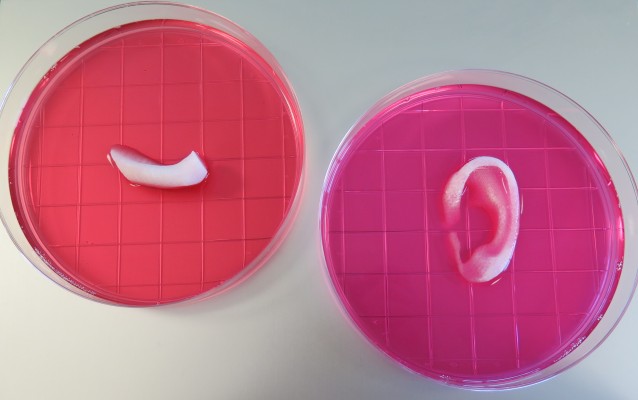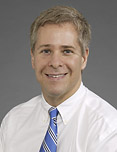By Staff
If you want to see the future of Winston-Salem, you will find it taking shape in the Wake Forest Innovation Quarter. A new industry, and community, is rising out of the rubble left from the collapse of manufacturing here in Winston-Salem. There is no better example of this than in the heart of what used to be R.J. Reynolds Tobacco Company’s manufacturing facilities in the northeast area of downtown. On a slip of a street called Vine sits a building now known as 525@Vine, the latest addition to the Innovation Quarter. The facility has been recently opened to tenants, moving the overall Innovation Quarter project another step closer to the goal of creating a campus that blends tech research and entrepreneurship in an innovative work/play/live environment.

The massive poured-in-place concrete superstructure of the original tobacco blending and processing plant is now a major, visual component of the repurposed building at 525@Vine. The former RJR plant, built in 1926, was redeveloped and renovated into a world-class research facility by its new owner, Wexford Science & Technology, a Bio Med Realty company. The facility has been transformed into a 234,000-square foot mixed-use laboratory and office building, a project which had a total budget cost of approximately $75 million. It is already paying off, with the building currently occupied at about 74% of its capacity.
“Wexford focuses on partnering with universities and creating hubs of innovation, and we are proud to include 525@Vine as an example of this strategy.” stated Dan Cramer, Wexford’s Senior VP of Development.
The renovation of the former tobacco blending and processing plant began in the summer of 2012 and a certificate of occupancy was awarded in December of 2013. 1,003 construction workers were involved in construction with 669 of those living here in Winston-Salem. Twelve percent of the sub-contractors involved in building 525@Vine were minority or female owned businesses. The facility features the latest in green technology, and is LEED Certified. All told Wexford has invested approximately $250million in three of the Innovation Quarter’s projects: The Wake Forest Biotech Place, Inmar’s Team Support Center & HQ, and now 525@Vine.
“In addition to being a sterling example of the wonderful things that can be done with old buildings, 525@Vine has a tenant roll call that represents the larger community being created here in the Innovation Quarter,” said Eric Tomlinson, Wake Forest Baptist’s chief innovation officer and president of the Wake Forest Innovation Quarter. “We fully anticipate that the spirit and energy these enterprises possess will create new sparks that lead to fascinating collaborations.”

The first tenant opened for business in 525@Vine was the Innovation Quarter Branch of the YMCA of Northwest North Carolina. The innovation Quarter Y features cardio machines, cycle and group exercise studios, a free-weight area, as well and women’s and men’s locker rooms. There is a trained wellness staff that includes personal trainers. For now the Y is only opened Monday through Friday, but as more tenants move in and the nearby Plant 64 Apartments project comes online later in 2014, the facility will likely expand its hours.
As soon as their space has been fully upfitted, Clinical Ink will be occupying approximately 7,676 square feet of 525@Vine’s office space. Clinical Ink’s flagship product is SureSource, a proprietary electronic platform that provides users with a paperless system for fast and accurate reporting of data, comments, explanations, and other information required for clinical trials. The company, founded in Winston-Salem in 2007, will have between 25 and 30 employees at their 525@Vine location.
Forsyth Tech will be utilizing 23,932 square feet of space with what will now be a major presence in the Wake Forest Innovation Quarter. Over 1,200 Forsyth Tech students are expected to attend classes, go to workshops, and receive career counseling at the new facility. Their downtown offerings will include:
- RJ Reynolds Corporate Training Center, which will support the school’s corporate training partnerships and programs as well as provide services to other Innovation Quarter tenants.
- Small Business Center, which will offer workshops, seminars, individual counseling, and a resource library for business owners and entrepreneurs.
- Lab facilities for the Wells Fargo Nanotechnology Program and the BB&T Biotechnology Program.
- Offices for the Bio Network, the statewide biotechnology workforce initiative run by the NC community College system.

One of the first new ventures that visitors will see when entering 525@Vine will be Flywheel. This 11,585 square feet facility will be unique in Winston-Salem, offering independent professionals, entrepreneurs, and innovators flexible short and long term memberships that will give them access to a casual, contemporary work environment featuring open and enclosed work spaces. Flywheel will have its own coffee bar (including beer for members) as well as conference rooms, support services, and other amenities. These include access to a local, regional, and national network of resources and innovation driven programming intended to help foster idea growth and accelerate the commercialization of the work of Camel City’s creative workforce. The facility will be open seven days a week, 24 hours a day.
Wake Forest Baptist Medical Center has a robust presence that brings their world-class research and education programs together. Two of their permanent programs have relocated to this new facility. The nationally recognized Division of Public Health Sciences and the nationally rated Department of Physician Assistant Studies house approximately 450 staff, faculty, and students. State of the art laboratory and office space is side by side with next-level educational facilities such as their patient interaction training rooms which are used to educate future healthcare workers and assist in community health outreach.
“Having Public Health Sciences and Physician Assistant Studies in this new facility downtown is a major part of our overall strategy to create synergies between our world-class research and education programs and our commitment to public-private partnerships to advance the economic development of the region.”, stated John D. McConnell, MD, the Medical Center’s CEO.
Future plans for the old rail line that sits between 525@Vine and the new Plant 64 facility include a greenway that will eventually connect all the way to the Salem Creek connector. This will provide both pedestrian and bicycle paths which will wind all the way through downtown to the south side of town, and link into the greenway.
525@Vine has managed to not only preserve a part of Camel City’s history, it has once again created a state of the art facility to fuel economic development in our town. It truly feels like the future of Winston-Salem is here.
























